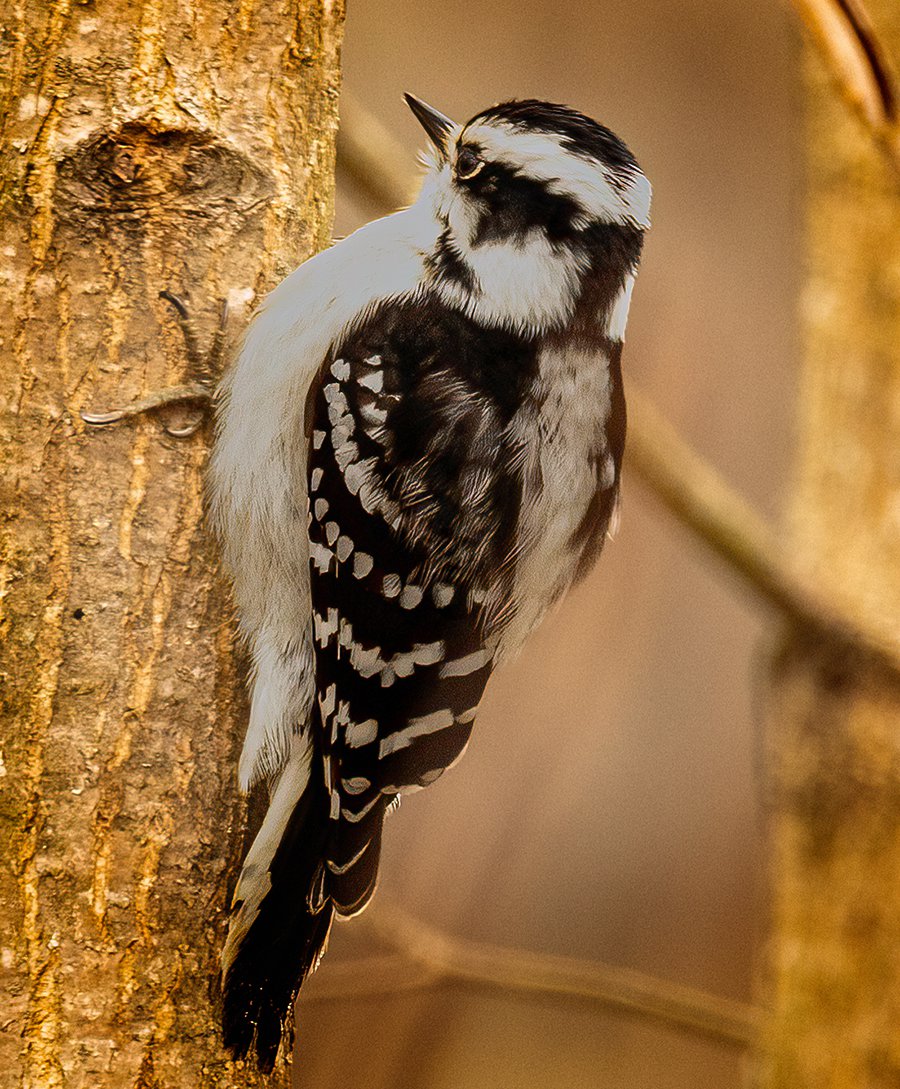Woodpeckers Unleashed: Discovering the Marvels of These Skilled Tree Climbers
Woodpeckers, with their unique markings and balanced drumming echoing with wooded locations, hold a special place in the avian globe - Woodpeckers in Florida. As we delve right into the complex information of woodpeckers' nesting habits, feeding methods, and the continuous preservation initiatives to secure these remarkable birds, a much deeper gratitude for their area in nature unfolds.
Composition and Adaptations
When checking out the anatomy and adaptations of woodpeckers, one can observe impressive functions that make it possible for these birds to flourish in their specialized eco-friendly particular niche. Woodpeckers are furnished with a collection of one-of-a-kind physiological attributes that assist them in their woodpecking behavior. One of one of the most popular functions is their strong, chisel-like beak, which is specialized for exploration right into timber to reveal bugs or develop nesting cavities. This beak is sustained by solid neck muscles and a very created head structure that functions as a shock absorber, enabling woodpeckers to repetitively peck at trees without causing brain injury. Additionally, woodpeckers have zygodactyl feet, with 2 toes facing ahead and two encountering backwards, supplying a company grip on tree trunks while they search for food or drum for interaction.
Additionally, woodpeckers have a distinct tongue framework that is long, barbed, and sticky, enabling them to draw out insects from crevices in wood. This specialized adaptation permits woodpeckers to manipulate a food resource that is unattainable to many other bird species. Overall, the composition and adjustments of woodpeckers showcase the exceptional evolutionary solutions that have actually allowed these birds to flourish in their arboreal habitat.
Drumming Habits
Having actually discovered the anatomy and adjustments of woodpeckers, the emphasis currently moves to comprehending their drumming behavior, an unique facet of their interaction and territorial screens. Drumming is a crucial kind of interaction among woodpeckers, serving numerous objectives such as developing regions, bring in companions, and signaling alarm system. Each woodpecker varieties has an one-of-a-kind drumming pattern that aids people acknowledge participants of their very own species and differentiate them from rivals or killers.
Woodpeckers generate drumming noises by quickly pecking on powerful surface areas such as dead trees, utility poles, and even metal items, producing a series of rhythmic beats. The intensity and rate of drumming can vary based on the objective; as an example, a fast drumming series may symbolize hostility towards burglars, while a slower and softer drumming pattern can show courtship (Woodpeckers in Florida). Furthermore, woodpeckers might change the frequency and duration of their drumming to share specific messages efficiently
Nesting Behaviors
Checking out the nesting practices of woodpeckers discloses interesting understandings into their reproductive behaviors and environment options. Woodpeckers are known for their distinct nesting preferences, often digging deep into cavities in trees to create sheltered spaces for elevating their young. These dental caries serve not only as a nesting site yet also as a safe sanctuary from killers and harsh weather.
Woodpeckers display a high degree of integrity to their nesting sites, usually returning to the same location year after year. This behavior highlights the value of suitable environment accessibility for their reproductive success. The option of a nesting site is important for woodpeckers, with elements such as tree varieties, height, and decay phase playing substantial functions in their decision-making procedure.
Remarkably, some woodpecker varieties are recognized to dig deep into multiple cavities within their area, providing themselves with alternative nesting options. This technique view it may serve as a form of insurance policy against potential risks or disruptions to their main nesting site.

Feeding Methods
Woodpeckers employ a variety of specialized feeding strategies to procure their primary food sources. One of one of the most distinct feeding habits of woodpeckers is drumming, which entails rapid pecking on trees to uncover pests under the bark. This drumming not just helps them find target but also acts as a way of interaction with other woodpeckers. Woodpeckers have strong, chisel-like beaks that permit them to drill into wood easily. As soon as an opening is developed, they utilize their long, barbed tongues to extract pests such as ants, beetles, larvae, and spiders. These tongues are covered with sticky saliva that helps catch the victim. Woodpeckers are also known to excavate dental caries in trees to gain access to concealed insect larvae or sap. Some types, like the acorn woodpecker, store nuts in specially developed holes called granaries. This tactical saving of food helps them endure during food shortage periods. Woodpeckers are really remarkable in their feeding techniques, showcasing flexibility and knowledge in procuring their nutrition.
Preservation Initiatives
Among the detailed feeding techniques exhibited by woodpeckers, the conservation efforts aimed at protecting these interesting birds play a critical duty in protecting their Continue habitats and populations. Woodpeckers face various dangers to their survival, consisting of environment loss due to logging, climate modification modifying their ecological communities, and crashes with man-made frameworks such as structures and cars - Woodpeckers in Florida. Preservationists are actively working to attend to these challenges and ensure the long-term wellness of woodpecker species

Education and public awareness projects are additionally essential parts of woodpecker preservation efforts. By raising recognition concerning the significance of these birds in keeping healthy forest environments, conservationists can amass assistance for environment preservation efforts and advertise liable land management methods. Via joint initiatives in between researchers, policymakers, and local areas, we can work together to secure a future where woodpeckers flourish in their natural habitats.
Verdict
